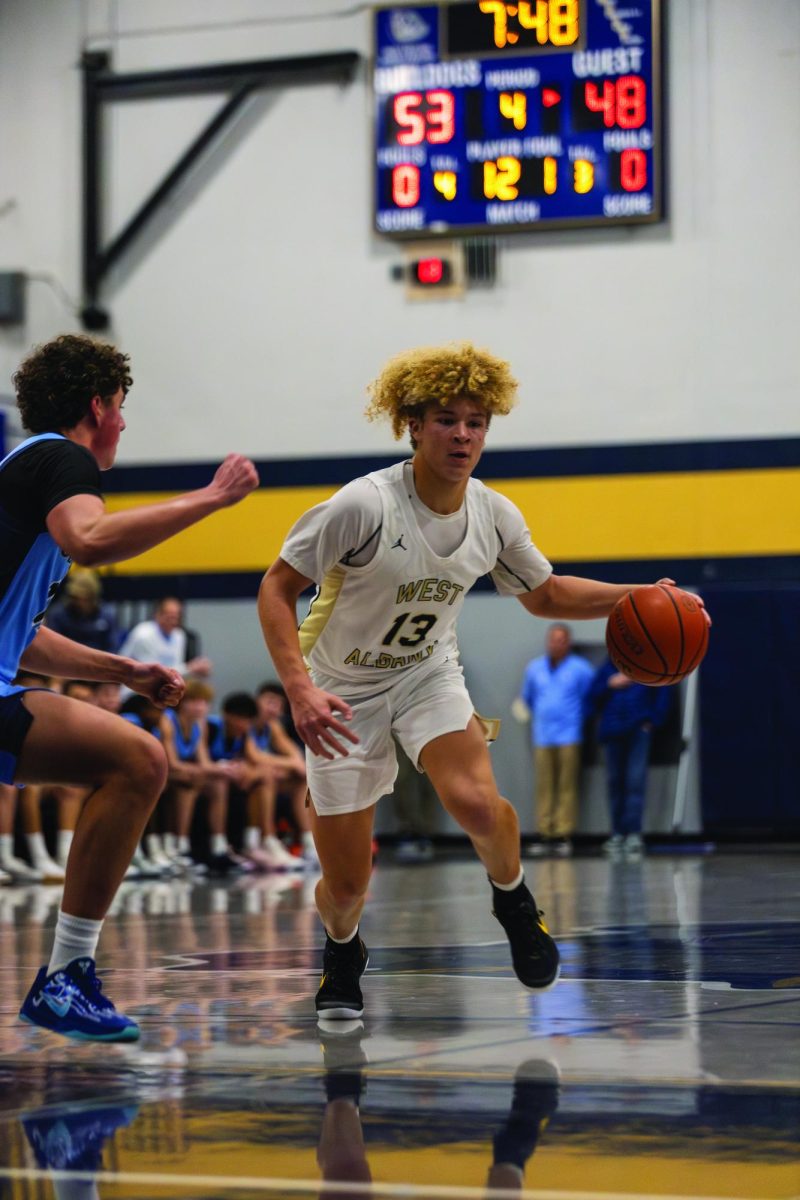What’s the process of getting to play in a pit orchestra?
The band director will come to the students and ask if they can participate.
What does the rehearsal schedule look like?
For the first month, rehearsals are twice a week for two hours, [but] once tech week starts it’s every day after school and can go until 9 p.m.
What is the setup like when playing?
It’s separated by instrument type, so woodwinds are on one side while brass is on the other, strings are in between winds and brass, and depending on the piece of music, there may be vocalists singing while the cast is on stage.
How does the sound affect the space in the auditorium?
The sound isn’t coming from just beneath the stage — each person has their own mic, and whoever is in the sound booth can adjust how they sound and make it so everyone is heard. There isn’t really any phasing between sounds because of where the mics are.
What challenges do you have when playing with the cast?
When we’re playing with the cast we have to adjust to them, so if they make a mistake, we have to rely on the director to cue us on when to play. We don’t have any visuals of what’s happening above us. Unlike the people on stage, we don’t get a single break, we are always doing something. [We’re] constantly playing so it can get exhausting after a while. Because it’s also one person to a part, we are held accountable and it’s a lot of pressure to be under because you don’t want to be the one to hold people back.
Are there any things that happen in the pit that most people wouldn’t expect?
A fun thing we did last year was kind of like a spirit week in the pit. We would decorate the space every day, and we wouldn’t take anything down, so it would just accumulate over the week.
Are there any downsides to playing in the pit?
The main downside is probably never actually getting to watch the play itself. We would have the TV’s on in the pit and we would occasionally get to see what was going on above us, but we never got to see the performance as a whole because we were always playing.


